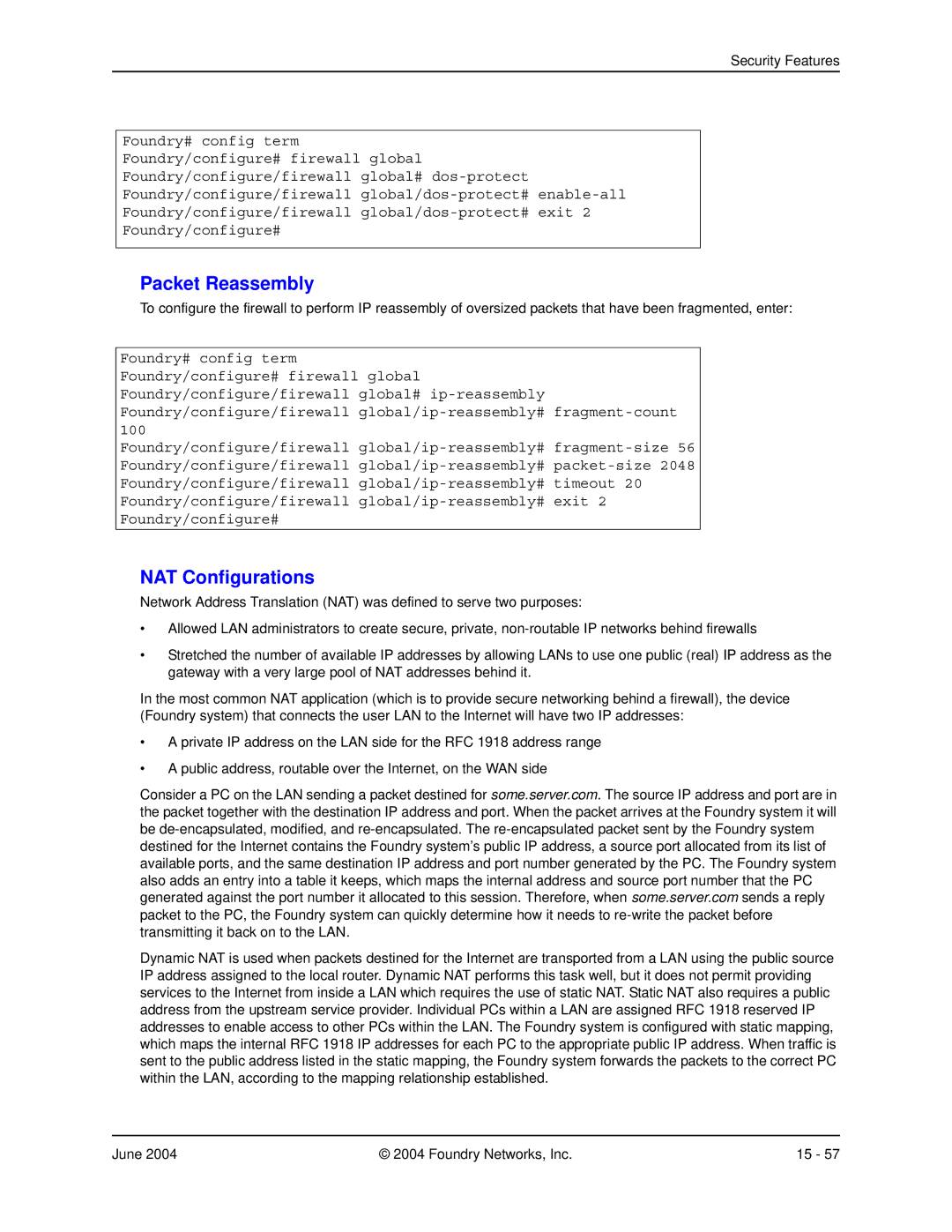
Security Features
Foundry# config term
Foundry/configure# firewall global
Foundry/configure/firewall global#
Foundry/configure/firewall
Foundry/configure/firewall
Foundry/configure#
Packet Reassembly
To configure the firewall to perform IP reassembly of oversized packets that have been fragmented, enter:
Foundry# config term Foundry/configure# firewall global Foundry/configure/firewall global#
Foundry/configure/firewall
NAT Configurations
Network Address Translation (NAT) was defined to serve two purposes:
•Allowed LAN administrators to create secure, private,
•Stretched the number of available IP addresses by allowing LANs to use one public (real) IP address as the gateway with a very large pool of NAT addresses behind it.
In the most common NAT application (which is to provide secure networking behind a firewall), the device (Foundry system) that connects the user LAN to the Internet will have two IP addresses:
•A private IP address on the LAN side for the RFC 1918 address range
•A public address, routable over the Internet, on the WAN side
Consider a PC on the LAN sending a packet destined for some.server.com. The source IP address and port are in the packet together with the destination IP address and port. When the packet arrives at the Foundry system it will be
Dynamic NAT is used when packets destined for the Internet are transported from a LAN using the public source IP address assigned to the local router. Dynamic NAT performs this task well, but it does not permit providing services to the Internet from inside a LAN which requires the use of static NAT. Static NAT also requires a public address from the upstream service provider. Individual PCs within a LAN are assigned RFC 1918 reserved IP addresses to enable access to other PCs within the LAN. The Foundry system is configured with static mapping, which maps the internal RFC 1918 IP addresses for each PC to the appropriate public IP address. When traffic is sent to the public address listed in the static mapping, the Foundry system forwards the packets to the correct PC within the LAN, according to the mapping relationship established.
June 2004 | © 2004 Foundry Networks, Inc. | 15 - 57 |
